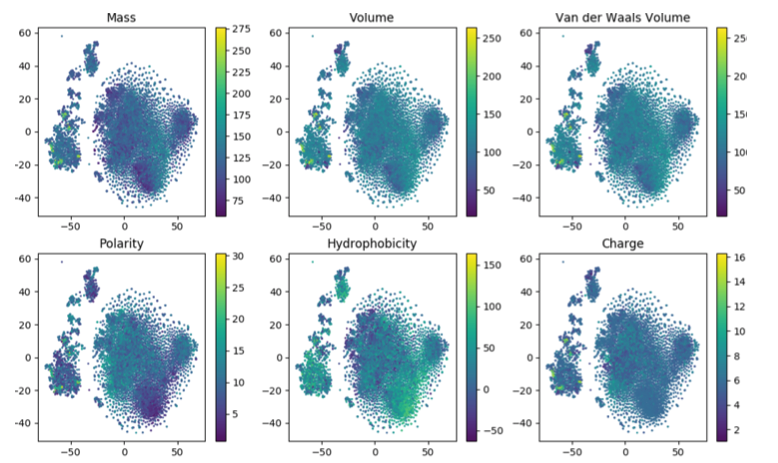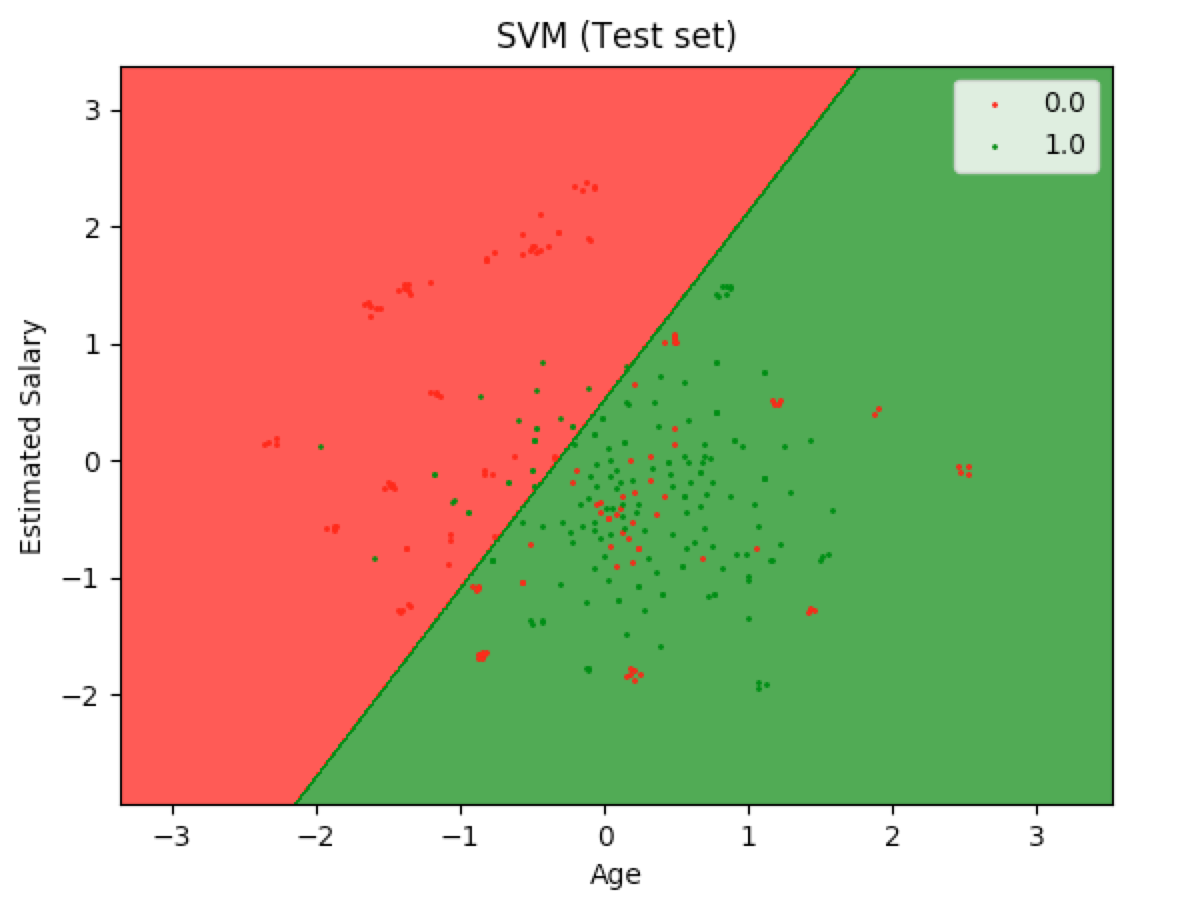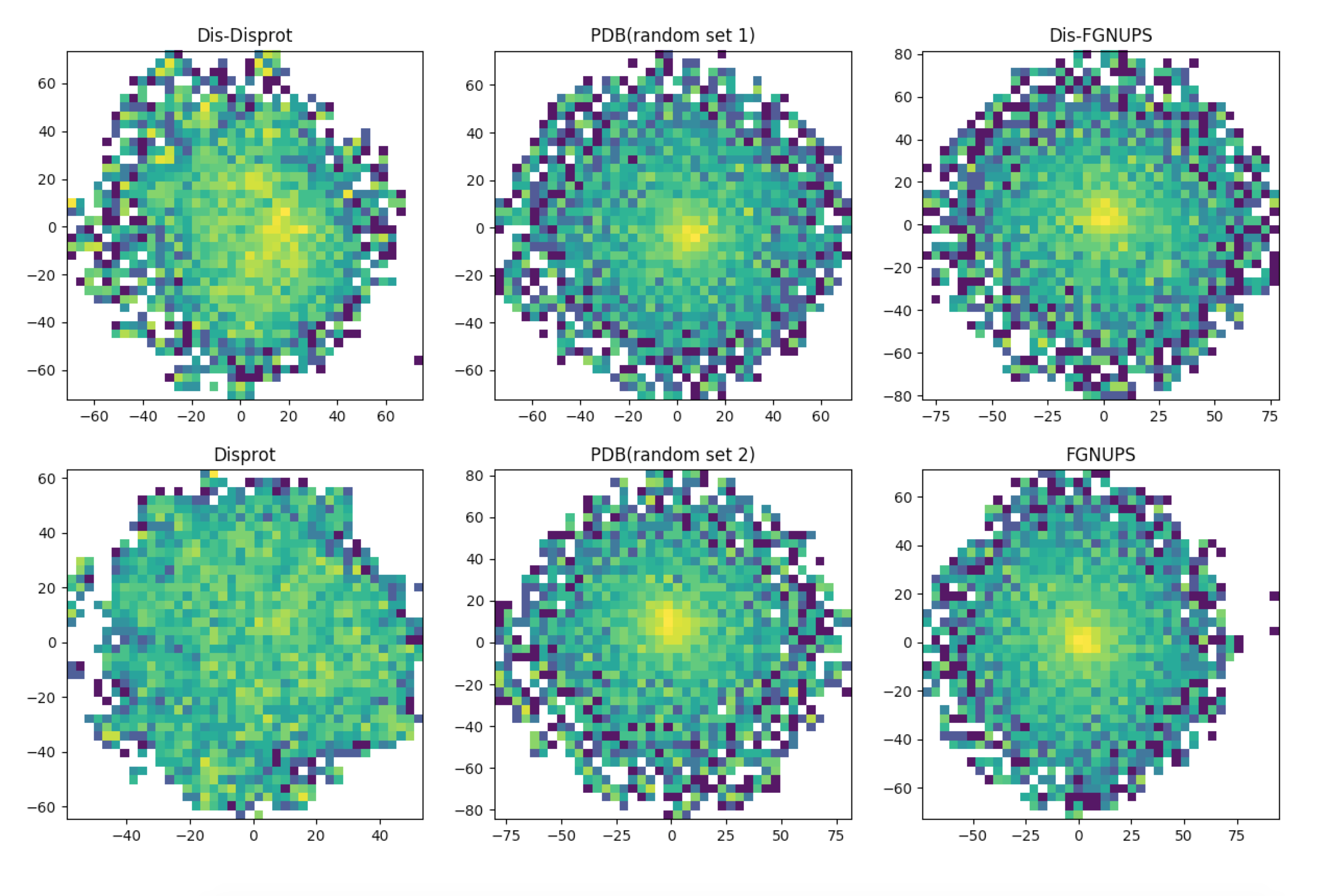Protein classification over sum of protein ngrams vector representation
Ordinarily, biological information is represented by an array of characters, but it is suggested that by expressing it as a vector, information can be stored more easily for analysis. As a specific application range,
- family classification
- protein visualization
- structure prediction
- disordered protein identification
- protein-protein interaction prediction.
Such Classification and prediction are easy to understand usage, but personally I felt that protein visualization would be most useful. Unless the sequence is short or the structure is already known, it seems that the current method of grasping the whole of protein is not popular in general, so I think that such expression method has certain usefulness. Although this idea seems strange at first glance, it is recognized to some extent in natural language.
See another implementation in https://github.com/kyu999/biovec, https://github.com/peter-volkov/biovec
Paper : http://journals.plos.org/plosone/article?id=10.1371/journal.pone.0141287
Uniprot (Swiss-prot)
Disprot
- Install python packages.
- pip install -r requirements.txt
cf) If you use macos and get a problem about installation issue with matplotlib python, go to the next link. https://stackoverflow.com/questions/21784641/installation-issue-with-matplotlib-python
- Download data file.
- If you want to run original program, you have to download original database from below link. https://drive.google.com/file/d/1qTbNRV2oDi4mBQ6RavuJXSSMtxr57ztT/view?usp=sharing
-
Move the downloaded file to our project directory.
-
And then, unzip downloaded file.
- If you download small DB
- tar -xzvf small_DB.tar.gz
- If you download original DB
- tar -xzvf original_DB.tar.gz
-
Run make_data_uniprot.py
-
Now you get ngram's corpus and ngram's vectors, protein's vectors, protein's families to uniprot_sprot.fasta
-
If you want to get how to we classify proteins into each family, please run bio_svm/train_svm_biovec.py
- then you want to know how to we organize SVM using RBF kernels, try next commend.
tensorboard --logdir=./logs
-
word2vec : Generating word2vec model from protein databases(gensim).
-
document : Protain databases(uniprot, Pfam, disprot, PDB...).
-
bio_tsne : TSNE(100D to 2D) 3gram vectors and protein vectors.
-
trained_models : Trained data made by make_data_uniprot.py
-
bio_svm : Classifying proteins (random PDB and FG-nups).
-
processd_data : Processing data( json file to fatsta , select data , merge data)
-
biovisual : Visualization protein vectors
-
ngrams_properties : For the labeing 3gram aminoacid
- Install python packages.
- pip install -r requirements.txt
-
download document
-
run make_data_uniprot.py
- python make_data_uniprot.py
- run visualize.py
- python visualize.py
- choose PS(protein space)
- just type PS
- finally you can see 3gram protein space
- Install python packages.
- pip install -r requirements.txt
- download document
- unzip document dis-disprot.json , disprot.json ,dis-fg-nups.fasta , fg-nups.fasta , pdb_seqres.fasta , disordered-pdb.fasta move document to processed_data
- run processed_sequence.py in processed_data
- processed_seqence.py generate dir of binary_svm
- have to gzip dataset.fasta file and move binary_svm to document
- dataset.fasta located 2017Bio2Vec/processed_data/binary_svm
-
run make_data_uniprot.py
-
run visualize.py
-
choos BSVM (binary svm)
-
run binary_svm.py
-
finally you can see binary svm graph
- Install python packages.
- pip install -r requirements.txt
- download document
- unzip document dis-disprot.json , disprot.json ,dis-fg-nups.fasta , fg-nups.fasta , pdb_seqres.fasta , disordered-pdb.fasta move document to processed_data
- run processed_sequence.py in processed_data
- processed_seqence.py generate dir of binary_svm
- have to gzip all the data
- the data located 2017Bio2Vec/processed_data/binary_svm
-
run make_data_uniprot.py
-
run visualize.py
-
choos DM(density map)
-
finally you can see density map


